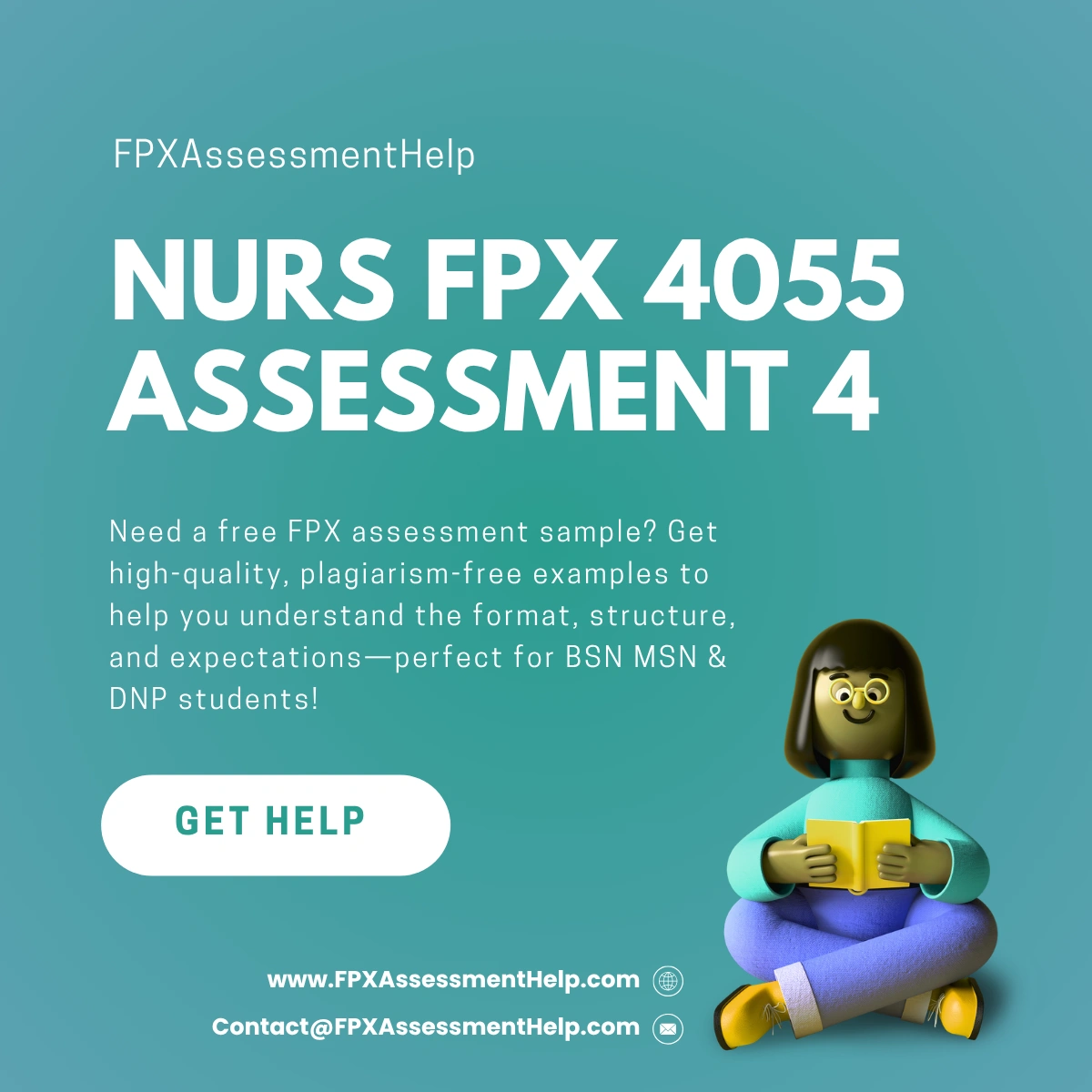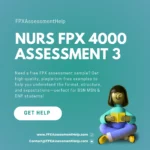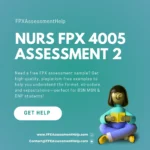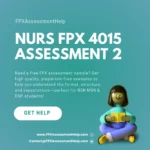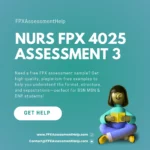NURS FPX 4055 Assessment 4 Health Promotion Plan Presentation
Student Name
Capella University
NURS-FPX4055 Optimizing Population Health through Community Practice
Prof. Name
Date
Health Promotion Plan Presentation
Good morning, everyone. Thank you for joining today’s session. Our focus is on preventing Human Papillomavirus (HPV) infection in adolescents and young adults aged 11 to 26 years, particularly in Schwenksville, Pennsylvania. This presentation aims to educate attendees about HPV’s link to cancer, highlight the benefits of timely HPV vaccination, and share strategies for having effective conversations with healthcare providers and family members. The framework guiding this presentation includes the SMART goals collaboratively established earlier, as well as the objectives outlined in Healthy People 2030.
Presentation Roadmap
During this session, we will provide comprehensive and structured content that covers the following:
| Objectives | Purpose |
|---|---|
| Share key facts about HPV and how it is transmitted | Build foundational knowledge about the virus |
| Highlight the vaccine’s importance, safety, and efficacy | Encourage early immunization decisions |
| Motivate participants to schedule HPV vaccination within 30 days | Translate knowledge into preventive action |
| Equip attendees to communicate effectively with providers and family members | Foster open, informed discussions |
| Include interactive elements like activities and discussions | Enhance learning engagement |
| Conclude with a short quiz and feedback survey | Assess participant understanding and confidence |
Key Information About HPV and Its Link to Cancer
HPV is one of the most prevalent viruses, transmitted primarily through skin-to-skin and sexual contact. In Pennsylvania, only 68.7% of adolescents are fully immunized against HPV-related cancers, with rural regions like Schwenksville showing even lower rates at 48.7% (PA.gov, 2025). This discrepancy underscores the critical need for awareness and preventive interventions in such communities.
Persistent HPV infections, especially those caused by high-risk strains like HPV 16 and 18, can lead to abnormal cellular changes and, eventually, cancer (Huber et al., 2021). HPV has been directly linked to cervical, anal, penile, and oropharyngeal cancers. Since many infections are asymptomatic, individuals may unknowingly carry the virus for years. Preventive vaccination, combined with routine screenings, is essential to reduce cancer incidence caused by HPV.
Benefits of Timely HPV Vaccination
Administering the HPV vaccine during adolescence, ideally at ages 11 or 12, ensures optimal immune response and long-term protection. Vaccination before potential exposure to the virus maximizes its effectiveness (Hoes et al., 2021).
The benefits of timely HPV immunization are shown below:
| Benefit | Impact |
|---|---|
| Strong immune response in early adolescence | Long-term immunity against multiple HPV strains |
| Prevents cervical cancer in females | Reduces global disease burden; second most common cancer in women (Huber et al., 2021) |
| Reduces other HPV-related cancers | Includes anal, penile, and throat cancers in both sexes (Cheng et al., 2020) |
| Prevents genital warts | Reduces stigma, discomfort, and emotional distress |
| Limits community transmission | Establishes herd immunity and protects vulnerable populations (Xu et al., 2024) |
These outcomes reinforce that early HPV vaccination is not only an individual health strategy but also a community-wide public health investment.
Strategies for Discussing HPV Vaccination
Engaging in conversations about HPV vaccination requires tact, evidence, and empathy. Here are three effective communication techniques:
- Use Trusted Facts: Share accurate data from the CDC or WHO to explain vaccine safety and effectiveness. This establishes credibility and can dispel rumors.
- Ask Insightful Questions: Questions like “How does this vaccine protect me long-term?” can open up dialogue and uncover concerns (Kassymbekova et al., 2023).
- Debunk Common Myths: When facing misinformation—like the belief that vaccination promotes early sexual behavior—healthcare professionals can clarify that the vaccine’s role is strictly preventive and cancer-related.
These strategies can empower individuals to navigate health decisions more confidently and responsibly.
Developed SMART Goals with the Participants
The session’s SMART goals were designed to reinforce learning outcomes and promote proactive health behaviors. These goals included:
| SMART Goal | Target |
|---|---|
| Identify three key facts about HPV and cancer | 90% of participants |
| Commit to scheduling HPV vaccination within 30 days | 80% of eligible participants |
| Show increased confidence discussing HPV vaccination | 85% of participants |
Participants engaged in guided practice scenarios, fact-based discussions, and myth-busting exercises to strengthen their confidence and understanding.
Session Evaluation on Developed SMART Goals
The evaluation showed that the session was largely successful in achieving its intended objectives:
| SMART Goal | Outcome |
|---|---|
| Knowledge of HPV facts | Achieved (92.5%) |
| Commitment to vaccine initiation | Partially achieved (75%) |
| Confidence in discussing HPV with others | Achieved (85%) |
While most goals were met, certain gaps emerged. Adolescents expressed hesitance to commit without family input, and a few participants desired more support in myth-busting conversations. To address this, future sessions could offer structured role-playing, real-time family discussions, and follow-up support.
Session Evaluation on Healthy People 2030 Objectives
The session aligned with Healthy People 2030’s aims to increase vaccination rates among adolescents and reduce HPV-related cancer incidence. Participants demonstrated a notable increase in knowledge (92.5%) and communication confidence (85%), which supports these public health priorities (U.S. Department of Health and Human Services, n.d.).
However, the 75% commitment to vaccination initiation indicates a shortfall in achieving full alignment with national targets. This points to the need for continued community education, stronger myth rebuttal strategies, and enhanced family engagement. Offering additional informational resources, follow-ups, or virtual Q\&A sessions may further promote vaccine uptake and build trust (Xu et al., 2024).
Conclusion
In conclusion, the HPV health promotion session was a critical step toward safeguarding the health of adolescents and young adults in Schwenksville, Pennsylvania. Through awareness, timely vaccination, and open dialogue, this initiative addressed both individual and community-level prevention strategies. While substantial progress was made in knowledge and confidence building, opportunities remain for improving vaccine uptake through more family-centered and supportive educational practices. The session helped move us closer to the goals outlined in Healthy People 2030 and reinforced the essential role of informed, preventive healthcare in our communities.
References
Cheng, L., Wang, Y., & Du, J. (2020). Human papillomavirus vaccines: An updated review. Vaccines, 8(3), 391. https://doi.org/10.3390/vaccines8030391
Hoes, J., Pasmans, H., Schurink-van ’t Klooster, T. M., van der Klis, F. R. M., Donken, R., Berkhof, J., & de Melker, H. E. (2021). Review of long-term immunogenicity following HPV vaccination: Gaps in current knowledge. Human Vaccines & Immunotherapeutics, 18(1). https://doi.org/10.1080/21645515.2021.1908059
Huber, J., Mueller, A., Sailer, M., & Regidor, P.-A. (2021). Human papillomavirus persistence or clearance after infection in reproductive age. What is the status? Review of the literature and new data of a vaginal gel containing silicate dioxide, citric acid, and selenite. Women’s Health, 17, 174550652110207. https://doi.org/10.1177/17455065211020702
NURS FPX 4055 Assessment 4 Health Promotion Plan Presentation
Kassymbekova, F., Zhetpisbayeva, I., Tcoy, E., Dyussenov, R., Davletov, K., Rommel, A., & Glushkova, N. (2023). Exploring HPV vaccine knowledge, attitudes, barriers and information sources among parents, health professionals and teachers in Kazakhstan: A mixed-methods study protocol. BMJ Open, 13(9), e074097. https://doi.org/10.1136/bmjopen-2023-074097
PA.gov. (2025). Dear VFC provider. https://www.pa.gov/content/dam/copapwp-pagov/en/health/documents/topics/documents/programs/immunizations/3.3.25%20-%202025%20HPV%20Call-to-Action%20Letter%20and%20Resources.pdf
U.S. Department of Health and Human Services. (n.d.). Vaccination – Healthy People 2030. Health.gov. https://odphp.health.gov/healthypeople/objectives-and-data/browse-objectives/vaccination
Xu, M., Choi, J., Capasso, A., & DiClemente, R. (2024). Improving HPV vaccination uptake among adolescents in low-resource settings: Sociocultural and socioeconomic barriers and facilitators. Adolescent Health Medicine and Therapeutics, 15, 73–82. https://doi.org/10.2147/ahmt.s394119
